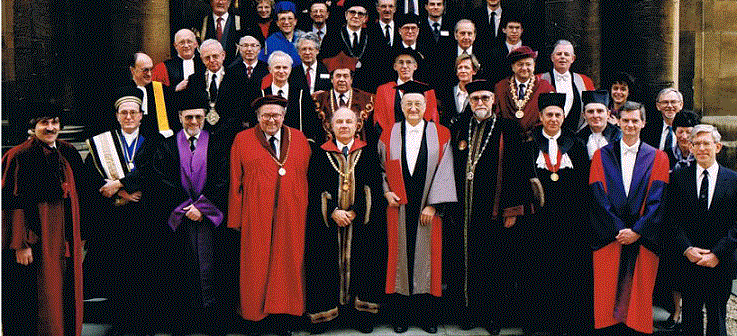ORIGINS
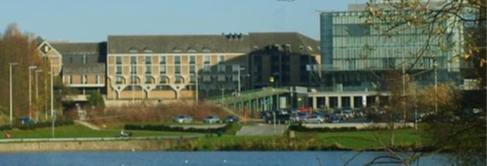
The Coimbra Group was founded on 25-26 October 1985 in Louvain-la-Neuve/Leuven. The original initiative came from the International Relations Office at the Catholic University of Louvain-la-Neuve with an invitation to similar universities to join in the celebrations of the 20th anniversary of the unit. The invitation letters were sent via ambassadors to the European Communities (later, the European Union), which at the time consisted of ten member states and awaited the adhesion of Spain and Portugal by 1st of January 1986.
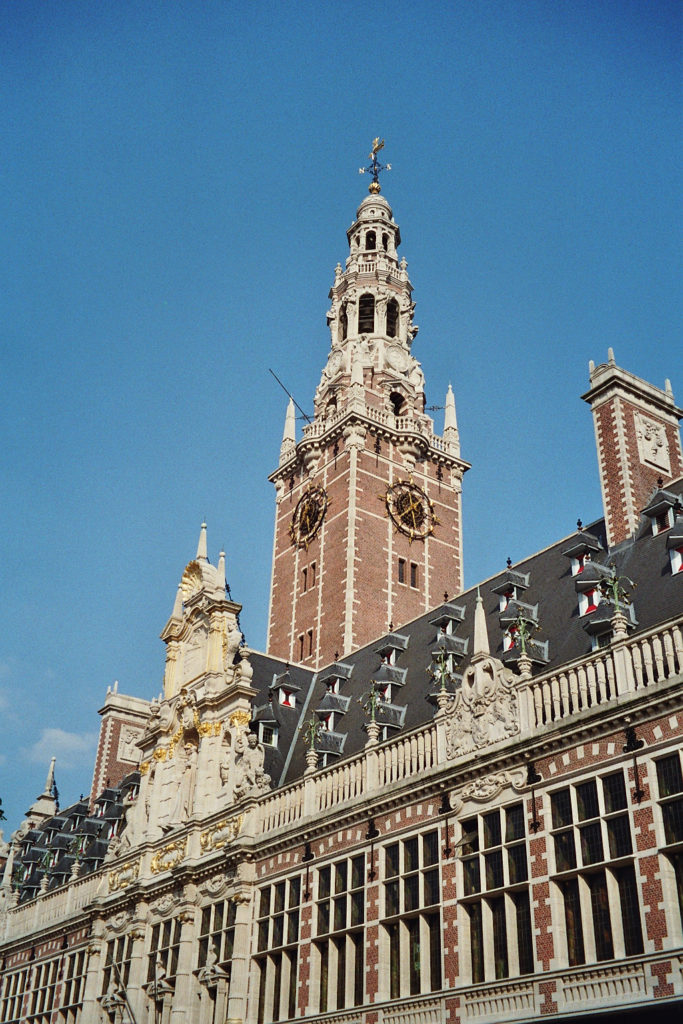
The letter to the ambassadors specifically invited them to establish contacts to rectors of universities, which were of the following character:
1. Université complète y compris une Faculté de médicine (comprehensive university, including a Faculty of Medicine);
2. grande Université dans une petite ville à l’image de Louvain-la-Neuve et Leuven (big university in a small city, like Louvain-la-Neuve and Leuven);
3. d’une ancienneté comparable à celle de Louvain (+ ou – 15ème siècle) (foundation date comparable to that of Louvain – XV century);
4. rassemblant à peu près le même nombre d’étudiants (15 à 30.000) (comparable number of students – 15 to 30.000).
(Letter to ambassadors of 30 August 1985)
The universities represented were Aarhus (DK), Caen (F), Coimbra (P), Leiden (NL), Leuven (B), Louvain-la-Neuve (B), Pavia (I), Poitiers (F), and Utrecht (NL).
The following universities had expressed their interest in joining: Cambridge, Edinburgh, Oxford (UK); Salamanca, Santiago de Compostela (E); Siena (I); Thessaloniki (GR); Trinity College Dublin (IRL); Heidelberg, Würzburg (D).
By early 1986 the universities of Bologna (I), Galway (IRL), Göttingen (D) and Granada (E) had joined, while Utrecht and Santiago had left to form their own networks. The 21 universities are the founding members of the Coimbra Group (CG).
Following on from the initial meeting in Louvain-la-Neuve/Leuven a meeting was held in Coimbra on 29-30 May 1986, at which it was decided to name the co-operation network after its host university. Joint projects were discussed, among them exchanges of choirs and orchestras, summer courses for North American students at CG universities, and joint student exchanges.
The first ‘general assembly’ was held in Aarhus on 11-12 September 1986 and the decision was taken to develop a legal entity with the name “Coimbra Group”. The Group also discussed ways in which to influence European policies and support the efforts to establish a Europe-wide student exchange programme. The first attempt in 1986 to establish a Community student exchange programme as a follow-up to the Joint Study Programme (1981-87) had been opposed by France, Germany and the UK, countries which had their own exchange programmes in place.
The University of Leuven organised a conference of rectors in late November 1986 at which thirty universities were represented, half of them from the CG. The meeting concluded with a telegram to Ministers of Education encouraging them to support the adoption of the proposed programme. The Erasmus Programme was finally adopted in 1987.
The General Assembly in 1987 was held in Pavia, where the founding charter of the Coimbra Group was signed by nineteen universities.
The CG started to prepare networks to support student mobility already in 1986 based on a protocol on academic co-operation established at the Aarhus meeting. During 1987, and in particular following a conference in Bologna in June 1987 to further encourage universities to support efforts to establish the Erasmus Programme, and on the basis of the discussions and decisions at the Pavia meeting, seminars for deans and senior lecturers were organised in a number of areas of interest to the CG members (law, economics and the humanities). The aim was to build on and extend existing collaboration at the same time as extending student services at the participating universities to cater for students coming from abroad. Seminars were organised in Siena and Würzburg in the late autumn of 1987 in time for applications covering the academic year 1988-89 to be submitted to the new Erasmus Programme.
The Siena seminar was held from 30 November to 4 December 1987 at Certosa di Pontignano with deans and senior lecturers from law, economics and the humanities. The Würzburg seminar took place at the central university building on 14-16 December 1987 and gathered deans and senior lecturers from law, social and political sciences, biosciences, and the humanities. Some of the inter-university co-operation programmes established at the meetings in 1987 are still in existence in one shape or another in law and economics in 2015, although no longer as Erasmus projects.
One of the main celebrations in 1988 was the 900th anniversary of the University of Bologna and the signing of the Magna Charta Universitatum Europaeum on 18 September. The 1987 June meeting in Bologna formed part of the preparations for the anniversary celebrations for Europe’s oldest university and the drafting of the charter laying down the fundamental principles governing universities and their relation to society. The draft was discussed at a meeting in Salamanca on 10-12 January 1988 of CG representatives, among the Professor Caputo from Bologna, vice-rector and one of the promoters of the charter. A number of translations of the charter were prepared by the CG following the Salamanca meeting.
The Magna Charta was signed by 430 university rectors on 18 September 1988 on the Piazza Maggiore in Bologna. More than three-hundred universities have added their signature over the years, and the charter is now signed by 755 universities from eighty countries.
The fundamental principles:
1. The university is an autonomous institution at the heart of societies differently organized because of geography and historical heritage; it produces, examines, appraises and hands down culture by research and teaching. To meet the needs of the world around it, its research and teaching must be morally and intellectually independent of all political authority and intellectually independent of all political authority and economic power.
2. Teaching and research in universities must be inseparable if their tuition is not to lag behind changing needs, the demands of society, and advances in scientific knowledge.
3. Freedom in research and training is the fundamental principle of university life, and governments and universities, each as far as in them lies, must ensure respect for this fundamental requirement. Rejecting intolerance and always open to dialogue, the university is an ideal meeting-ground for teachers capable of imparting their knowledge and well equipped to develop it by research and innovation and students entitled, able and willing to enrich their minds with that knowledge.
4. A university is the trustee of the European humanist tradition; its constant care is to attain universal knowledge; to fulfil its vocation it transcends geographical and political frontiers, and affirms the vital need for different cultures to know and influence each other.
The CG Universities are all signatories.
A survey among participants at the Salamanca meeting in early 1988 was made to establish when academic terms/semesters/trimesters start and end, when exam periods are planned, when registrations deadlines are set, etc. In the early years of the Erasmus Programme there was a serious demand for a “European academic year” to align all the different periods of study. This never happened, of course, and instead universities learned to be more flexible, as did the students.

The first year of the Erasmus Programme did not include many student mobility programmes as hardly any were approved. The CG Universities obtained a contract for an exploratory joint programme to develop student mobility projects. For the next application round (1989/90) the CG Universities prepared about forty applications to the Erasmus Programme, among them student mobility programmes, joint programme proposals, “free mover” programmes, intensive programmes and “short teaching assignments”. One of the developments was the CG’s wish to promote language learning and a number of intensive language courses were established, most of them offered to students prior to the start of an academic year. Other agreements included waiver of tuition fees for CG students, something also incorporated in the CG Charter. The Irish and British member universities agreed to join the Charter as long as they could maintain their own current fee arrangements.
The joint programme supported efforts within the CG to organise seminars and ensured continuous follow-up over the first year. The final report was drafted at a seminar in Siena in February 1989, outlining the information gathered, including an overview of international student services and containing recommendations and conclusions on the desirable improvements, both of the Erasmus Programme in general and of daily practices implemented by the individual universities.
The General Assembly on 21-24 October 1988 took place at the National Irish University Galway and at Trinity College Dublin upon invitation from President Colm O’hEocha, Galway, and Trinity College Provost William Watts. One of the major decisions was to support the continued development of Erasmus projects and intensify relations between the international offices at CG member universities. The General Assembly also agreed to welcome as new members of the Group the universities of Barcelona, Bristol and Groningen.

Collaboration with Latin American universities started with a pilot project at the end of 1987 when Simon-Pierre Nothomb obtained funding from the European Commission to launch a pilot project to strengthen relations with Latin American alumni of European universities to create alumni groups (Circulos Europeos). The General Assembly in 1989 in Poitiers accepted, after a lengthy discussion, to support the project and the first alumni groups were created at the end of the year in Buenos Aires, Montevideo and Santiago de Chile.


The same General Assembly hosted, for the first time, a meeting of MOSAIC, the ‘Movement of Students Aiming at Integration of the Coimbra Group’. The very first meeting of the group was held in 1986 when two members of the Students’ Association in Coimbra invited other Coimbra Group students. Over the next couple of years the student group was an active and integral part of the development of cultural exchanges, student information centres and student guides.

The year 1989 also saw the development of an embryonic office in Brussels into a more stable and permanent fixture with Cecilia Costa, one of the initiators behind MOSAIC, as the first head of office.
EXPANSION
With the political changes in Europe at the end of the 1980s and the early 1990s, the research and higher education scene also changed; the research programmes were opened up to a wider Europe, and the Erasmus Programme started negotiations to include the EFTA countries in the Programme. The expansion of the European Union – which at the time was still called the European Economic Community (EEC) – had introduced Greece (1981) and Spain and Portugal (1986), but the political changes from 1989-1990 led to further expansion. The first expansion came when the so-called FNL, the “Five New Länder”, the former East German states, merged with the former Federal State of West Germany in 1991 to create the Federal Republic of Germany with sixteen constituent states. This led to extraordinary measures being introduced to the Erasmus Programme to allow the “new” German HEIs and students to participate – quickly followed by the creation of the Tempus Programme, funded by the PHARE Programme of the EEC to facilitate pre-accession activities for central and eastern European countries (“Poland and Hungary: Assistance for Restructuring their Economies”).
The Coimbra Group continued its collaboration with the Latin American countries through the alumni organisations, but also started projects under the TEMPUS umbrella from 1991 onwards. Just as the TEMPUS Programme was based on the Erasmus model, the activities amongst Coimbra Group universities built on the experience from co-operation over a number of years with student exchanges within the Erasmus Programme. New member universities were introduced with the three Montpellier universities, the University of Uppsala, the Eötvös Loránd University of Budapest, the Friedrich-Schiller-Universität Jena, the Jagiellonian University of Kraków and the Charles University Prague joining the Coimbra Group at the General Assembly in Heidelberg in 1991.

With the expansion of membership came a need to revise the structure of the Coimbra Group. The restructuring was based on a discussion document presented at the first Lustrum of the Group in 1990 (2-5 April) on the occasion of the 700th anniversary of the University of Coimbra. The new organisational structure comprised a Steering Committee and a President, the first being the Rector of the University of Heidelberg, Professor Peter Ulmer (1991). The “Declaration of Coimbra” was adopted at the General Assembly in Heidelberg in 1991, 18-22 June. The CG Office prepared the statutes for a Belgian not-for-profit organisation (a.s.b.l./v.z.w) to be adopted under Belgian law, thereby providing the Coimbra Group as an organisation and the CG Office as an administrative body with legal status. The statutes were based on discussions amongst member universities with a view to establishing an organisational structure that secured the autonomy of individual universities, laid down the voting rules and regulations, defined the role of the Steering Committee, and safeguarded joint projects. The statutes were finally adopted and published in the Belgian Official Journal, Moniteur Belge/Belgisch Staatsblad on 30 April 1992.
Rectors from Latin American and European universities met in Granada in September 1992, where they signed the “Declaración de Granada”, aiming at establishing new, formal agreements for mutual collaboration and support between the universities on the two continents, among them a programme of cultural development and defence of social and cultural identity. The declaration recommended the inclusion of Latin American universities in the Erasmus Programme. In 1994, the European Commission launched the ALFA Programme, which allowed for exchanges of undergraduate and graduate students. The experiences gained from the “Circulos Europeos” were invaluable and formed the foundation in many of the networks and projects launched. The first major ALFA Programme project was launched in 1994 in Coimbra.

In 1990, the European Commission launched the “Renovated Mediterranean Policy” with an increased budget compared to earlier policy programmes covering the Mediterranean, and among the objectives and strategies was assistance to societal actors (universities, media and municipalities) to contribute to de-centralised “Med” programmes. The CG decided to establish a task force to deal with the Mediterranean area in 1992 at the General Assembly in Oxford (30 March-3 April 1992). The Mediterranean policies were further developed and at the meeting of foreign secretaries from the 15 EU Member States and 17 Mediterranean countries in Barcelona in November 1995, they agreed to create a Euro-Mediterranean free trade economic zone. The Barcelona Declaration on Euro-Mediterranean co-operation has since formed the foundation for further co-operation. The Tempus Programme was expanded to incorporate collaboration with Mediterranean countries, and several projects have since been undertaken by member universities and by the CG Office.
The Tempus Programme was further expanded following the devastating developments in the Balkans in the 1990s. Originally, the Balkan States, which apart from Albania were all part of Yugoslavia, were included from the start of the Tempus Programme in 1990-91. This lasted for one year only when the break-up of Yugoslavia led to a re-definition of the geographic configuration of the Programme. The European Parliament passed a resolution in 1991, which declared, “that the constituent republics and autonomous provinces of Yugoslavia must have the right freely to determine their own future, in a peaceful and democratic manner and on the basis of recognized international and internal borders”. Albania joined in 1992, Bosnia and Herzegovina and the Former Yugoslav Republic of Macedonia in 1996. PHARE funding was followed in 2000 by the CARDS Programme (Community Assistance for Reconstruction, Development and Stabilisation), the EU’s main instrument for financial assistance to the Western Balkans. Tempus was one of the regional programmes funded under this instrument. Several Coimbra Group Universities were active in projects with the Western Balkans, and still are.

The first formal elections of Steering Group members took place in 1993 at the General Assembly in Budapest, 5-9 May. The year before it had been decided to find more suitable and, in particular, more central accommodation for the CG Office and it moved to Rue de la Concorde 60 in the Ixelles Commune in Brussels in 1993. At the same time a full-time secretary was recruited. At the General Assembly the year after, in Groningen on 15-17 June 1994, an internal evaluation of member universities was discussed as part of the ongoing restructuring efforts. New member universities were invited to join the following year at the General Assembly in Leiden (6-8 June), on the occasion of the University’s 420th anniversary: the Universities of Bergen, Graz, Åbo and Turku. In 1996, the Steering Committee invited former committee members to a discussion of the future development of the Coimbra Group, based on the expansion of membership, the internal evaluation of the Group, especially as one of the founding members, the University of Caen had left the Group that year, and in view of the changing European environment. An increasing number of former Eastern European Countries were by then pre-accession countries and seemed set to join the EU within the coming years, something that would influence research and education policies of the individual Member States as well as the EU as a whole.
Most of 1999 was dedicated to discussions leading up to the signing of the Bologna Declaration in June. The Pavia General Assembly on 1-5 June the same year agreed on the “Pavia Declaration”, setting out the Coimbra Group perspectives on the Bologna Process. The declaration was sent to the European Ministers of Education prior to the meeting in Bologna on 19 June:
“… on the threshold of a new millennium the rapid and far-reaching evolution of society towards a knowledge-based society characterized by problems on a global scale, a new demand for high-quality education and research, and the major impact of new technologies has also placed academic institutions, centres of intellectual and cultural lives, in a position where they must face up to a number of challenges. In a world where human capital is becoming the major resource universities of all continents can and must be in the forefront of the shaping of the future society more than ever before.”
At the start of the new Millennium, the Coimbra Group consisted of thirty-four universities as the University of Padova had joined the Group at the General Assembly in Pavia in 1999. One of the first decisions at the General Assembly in Graz in 2000 was to invite the University of Geneva to join the Group.

The start of the new millennium also saw the start of a new EU research policy when the Council of Research Ministers and the European Commission launched the Communication “Towards a European Research Area” (18 January 2000). The Coimbra Group focused on its new consolidated membership and the two new large policy initiatives in areas crucial to universities, research and higher education policy.
Member universities supported several other initiatives, among them the distance education project “VIRTUE – a ViRTual University for Europe” in collaboration with EuroPACE 2000 in Leuven with the CG Universities responsible for the creation of virtual learning environments in law, literature and philosophy (1996). The following year the Steering Committee established ACONTE, an advisory committee on new technologies in education, which eventually led to the creation of an e-learning task force. The same year (1997) a European Cultural Committee was created as one of the outcomes of the meeting with former steering committee members. A first meeting of folklorists was held in Åbo in November 1999, and the group would later merge with the cultural committee to form the culture, arts and humanities task force.
Since the start of the 1990s the various activities of member universities started were undertaken by working parties, committees and task forces, with working parties on collaboration with Latin American (1991) and on collaboration with Mediterranean countries, MedCampus (1992). Cooperation with Central and Eastern European Countries grew from the TEMPUS projects, also in the early 1990s, as did involvement with sub-Saharan countries, developing into the ACP task force with a service contract with the European Commission from 2001 to establish an overview of collaboration activities. The task force on new mobility programmes and the one on equivalence of degrees later merged into the EPET task force (European Programmes in Education and Training) and later to the ETM (Education, Training and Mobility) task force. This happened when the contractual regulations of the Erasmus Programme changed from inter-university co-operation programmes to institutional contracts in the second half of the 1990s, which made the Programme an institutional administrative activity instead of an activity run by academics. The Distance Education task force later grew into the e-learning task force after work on a number of projects in the second half of the 1990s, among them collaboration with EuroPace, based in Leuven. And finally, the research co-operation task force later became the Doctoral Studies and Research task force in 2003. Among the working parties was one on intellectual property, later incorporated in the research cooperation task force, and one on the use of the word “university”, which was eventually disbanded when activities of the Magna Charta Observatory expanded. By the early 2000s, the Coimbra Group had a set of task forces, offering opportunities for university staff in all activities of relevance to the universities to collaborate and exchange information.
The Annual Conference in Graz in 2000 welcomed the University of Geneva as a new member and approved a statement on cultural identity with the “Graz Declaration”, expressing the “wish that European cultures within Europe flourish as a result of a variety of cultures and traditions”. The wars in the Balkans over the past eight years had clearly made their mark, something which was reflected just a few years later with the initiative to establish winter schools (2003-2005) in Split to bring together students and doctoral candidates from the war-torn countries. The Graz Conference also saw the start of the Hospitality Scheme, a grant scheme established to assist doctoral candidates from the Balkans to spend a study period at one of the Coimbra Group Universities. This later grew into a larger scholarship initiative when CG Universities decided to establish similar schemes for Latin American scholars and, more recently, for African researchers and administrators.
The following year at the 2001 Annual Conference in Bristol it was decided to undertake a SWOT analysis of the Coimbra Group to further consolidate collaboration amongst members. A tradition of closed meetings for the Rectors had started the year before and in Bristol the discussions took place in a separate building to discuss the Bologna Process and quality assurance measures. The development of the separate rectors’ meetings eventually lead to the establishing of a Rectors’ Advisory Group at the Granada Annual Conference in 2003.
The results of the SWOT analysis were discussed at the 2002 General Assembly in Leuven (17-20 April), leading to a number of consolidation efforts, among them the official legal status of the Coimbra Group a.s.b.l./v.z.w., i.e. a not-for profit organisation, NGO, in February 2002. At the same time, the CG Office moved to new premises in Rue de Stassart, where it would be based for the next four years. A further development was the adoption of a new Mission Statement, including the establishing of the Rectors’ Advisory Group in 2003, consisting of the former, present and future Honorary Presidents as ex officio members and four rectors, elected by their peers for two-year periods, renewable once. The University of Lyon joined the Coimbra Group in 2002 and the Group concentrated on consolidating and expanding activities.
CONSOLIDATION
Any university and university organisation will know that the concept of consolidation is a time-limited one, but still functions as a foundation for further and future development. By 2005, when the Coimbra Group celebrated its 20th anniversary, the Group consisted of thirty-seven universities in 21 countries and had established an organisational structure of General Assembly, Honorary President and Rectors’ Advisory Group, Executive Board, Administrative and Financial Committee and eight Task Forces: ACP, Culture, Doctoral Studies and Research, E-Learning, EPET, European Neighbouring Countries, Med-Campus, Latin America.
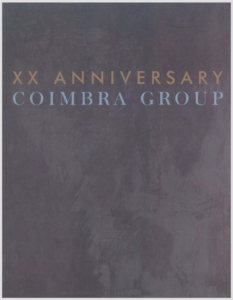
The 20th anniversary was celebrated in Coimbra and the University of Coimbra produced an anniversary publication with interviews with key personalities on the history of the Group and a presentation of each member university. At a solemn ceremony, the University of Coimbra conferred honorary doctorates to Simon Pierre Nothomb (Louvain-la-Neuve), Peter Floor (Leiden), Antonio Savini (Pavia), and Knud-Erik Sabroe (Aarhus), all former or present Chairs of the Steering Committee.
In the “Coimbra Group 20th anniversary Declaration on the role of the university in the 21st century”, adopted at the General Assembly on 12 May, the group confirmed its adherence to the principles of the Bologna Process and underlined the crucial role of universities in society.
(University of Coimbra, May 2005)


The celebrations in Coimbra marked the start of a period of development and of stocktaking. The collection of “Charters of Foundation and Early Documents”, which had been produced by the University of Groningen on the occasion of the Annual Conference there in 1994 was revised and printed by the Leuven University Press in 2005 to mark the 20th anniversary, including the member universities invited since 1994. Additional pages were included when the Alexandru Ioan Cuza University of Iaşi joined in 2007.
The Mission Statement was discussed and revised at the Granada General Assembly in 2003, and it remained the central reference to the character of the Group. It was revised at the General Assembly in 2011 (cf. below).

The Coimbra Group Office launched its first web site in 2002 with a presentation of the Group, its organisation, its members, projects and the task forces. The web site later developed with additional references and links, including the introduction of an intranet to allow for internal information on meetings, internal regulations and task force related activities.
The web site acquired its “eu” address in 2006, and in 2013 the web site was overhauled, notably in view of new technologies and the growing use of tablets and smart phones, but also to provide better access and additional editing functions.
Among the information available on the web site were overviews of the growing involvement of CG Universities in European projects with the inclusion of a list of Erasmus Mundus projects with CG involvement, either as coordinators or participants. By 2006, CG Universities participated in and/or coordinated fifty-seven Erasmus Mundus projects thereby continuing their presence in EU higher education programmes. The EPET, later ETM (Education, Training and Mobility) task force provided overviews of CG activity within the Erasmus Programme with the annual review provided by Professor Donà dalle Rose from Padova, which show the continuing high percentage of involvement. Since 2006, CG Universities are still centrally placed amongst participating universities in all strands of the (since 2014) “Erasmus+” Programme, in spite of the widening of the number of eligible higher education institutions. With the expansion of the Erasmus Mundus Programme to encompass still wider parts of the world, CG Universities have taken the opportunity to organise, coordinate and/or participate in projects with universities in countries throughout the world. By 2010, CG Universities received or sent one-fifth of all Erasmus students (19.3 per cent) and CG Universities were among the top ten host universities in the Erasmus Programme – whether it was called “Socrates”, “Lifelong Learning” or “Erasmus+”, it still kept its Erasmus name as one of the main activities. By 2015, the percentage is 16.3 per cent, i.e. one in every six Erasmus students either come from or go to a CG University.
When the changes to the Research and Development Framework Programmes were introduced with the EU’s 7th Framework Programme and the European Research Council was established after considerable pressure from academic and university organisations in 2007, researchers at CG Universities embraced the opportunity to form networks and/or apply individually for the various possibilities available. Coimbra Group Universities are still among the high performers, also in the new research framework programme, Horizon 2020.
The tradition of ground-breaking research and continuing excellence in research was celebrated at the 2008 Annual Conference in Jena, the City of Science 2008, with the opening of the “European Storehouse of Knowledge”, recalling Goethe’s letter to Schiller in 1800, calling Jena “Die Stapelstadt des Wissens und der Wissenschaft“ (29 July 1800). The celebrations included “A Gallery of Geniuses” in the central market square, art installations and a glass table with laser images of inventions, now permanently stored in the former Municipal Storehouse.


The presentations and descriptions of scientific and cultural inventions and discoveries throughout the ages were collected in the publication “The European Storehouse of Knowledge” (Jena, 2008).
In 2010 the Alexandru Ioan Cuza University of Iaşi hosted the Annual Conference on the occasion of the 150th anniversary. The theme was “Research and Values” and the conference brought together decision makers from the EU’s Research Advisory Board and Harvard University to discuss the new developments and values in research policy.
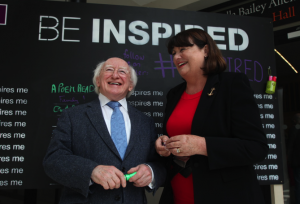
The National University of Ireland Galway hosted the 2013 Annual Conference also on the theme of research. The President of Ireland, Dr Michael D. Higgins, and Commissioner Maire Geoghegan Quinn explored the theme of “Creativity, Research and Innovation in Universities”. Researchers from arts and languages and from funding agencies contributed, as well, to fit in with the well-chosen venue in the West of Ireland, the home to writers, artists and innovators for generations.
In April 2013 the Coimbra Group organised a high-level seminar on research policy, in particular the European Commission’s new research framework programme, Horizon 2020, at the Venice International University (VIU) on the island of San Servolo with contributions from the European Research Council, the European Commission and representatives of universities and programme committees. This was followed by a second high-level seminar in October 2014, also at the VIU, on “Horizons 2015: First Experiences, Emerging Expectations. Horizon 2020 from the perspective of European Research Universities” with contributions from universities and a first meeting of research support officers at CG Universities. The policy seminars followed on from a series of thematic seminars started in 2009, bringing together deans of science (2009-2011, in Leuven, Bologna and Jena), economics (2009 in Poitiers), translation studies (2010 in Granada) and of the humanities (2010-2014, in Montpellier, Uppsala and Dublin).
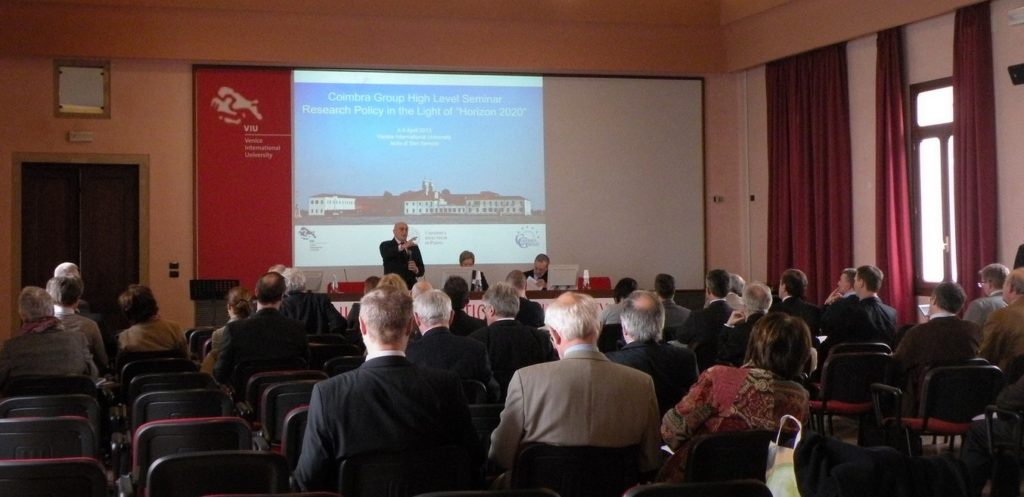
The cultural and regional impact of universities has been on the agenda of the Coimbra Group since its inception and has been celebrated at various conferences and seminars. In 2000 the Universities of Leuven and Louvain-la-Neuve organised a seminar on “Town and University”, in part to celebrate the 15th anniversary of the founding of the Coimbra Group, hosted by the two universities that organised the very first meeting of what became the Coimbra Group, and in part to celebrate the close relationship and cultural impact of the co-existence and interrelationship, “A Dynamic Symbiosis”, the seminar’s subtitle.
Both in connection with the twentieth and the twenty-fifth anniversary publications celebrated the cultural aspects of university life and traditions – in 2005 in Coimbra with the historical overview of the development of the Group, mentioned above.
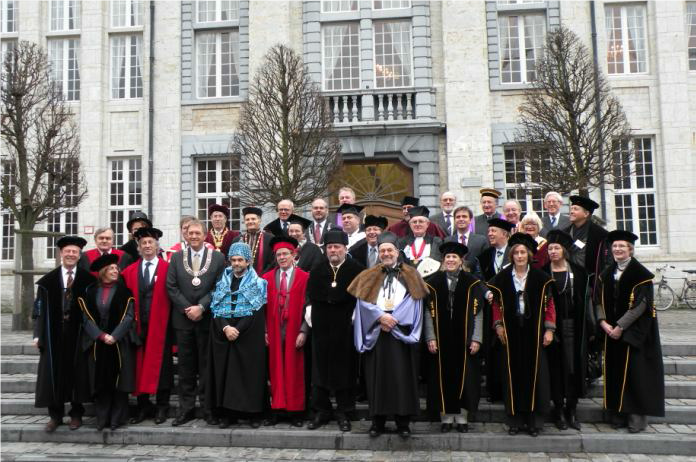
In 2010, rectors from CG Universities and mayors from cities hosting CG Universities participated in the Dies Natalis celebrations of KU Leuven and Université Catholique de Louvain on 1-2 February. The seminar on 1 February on The impact of the university on regional economic development and the evolution of the knowledge economy, was introduced by former Vice-Chancellor of Oxford University, Lord Boers, and the Chair of the Committee on Regional Development in the European Parliament, Dr Danuta Hübner.
The anniversary was celebrated on 26-27 October at a seminar in Brussels on “The Forgotten Origins of Universities in Europe” to underline the impact of developments in the sciences and philosophy in Europe. The Alexander Ioan Cuza University of Iaşi published the presentations in book form the same year. The following year the University of Pavia organised a follow-up seminar on the occasion of the University’s 650th anniversary, on “Collegiate Learning in the Middle Ages and beyond” to underline the cultural importance and influence of learning institutions in towns and the perception of learning and research as activities independent of church or state intervention.
The cultural importance of universities is an integral part of the identity of the Coimbra Group and has been incorporated in numerous other activities, most recently by the University of Pavia where they organised a conference in collaboration with the Italian Rectors’ Conference on “The University and the City” in September 2015. This will also be the theme of the 2016 Annual Conference when the University of Poitiers hosts the conference on “The University in the City”.
Connected activities include bringing together the botanic gardens of Coimbra Group Universities, among the oldest in Europe. At the 2011 Annual Conference the University of Padova and its Orto Botanico invited other CG Botanic Gardens to a seminar, resulting in a collection of botanic garden presentations, published by the University of Padova the following year. The University of Padova has kindly offered to publish a revised version in 2015, also incorporating the new Coimbra Group members and some of the botanic gardens not included in the first publication. The botanic gardens are among university activities most appreciated by the general public and they have an important role to play in fostering knowledge about the natural world and teaching young and old about preservation and cultivation, based on the research efforts of the universities.
Further cultural and regional activities include the undertaking of the so-called “Winter Schools” from 2003 to 2005 in an attempt to bring together postgraduate students and scholars from the new nations appearing after the break-up of former Yugoslavia. The three “Winter Schools” were an initiative of the Eastern Neighbouring Countries task force and took place at the University of Split under the common title of “Negotiating a Common Future to South-East Europe: Regional Cooperation and European Integration”. The first two “Winter Schools” received funding from the DAAD, the German Academic Exchange Service, and in the last year a grant from the Central European Initiative made the third seminar possible. The “Winter Schools” were interdisciplinary and centred on teamwork, bringing postgraduate students together, also to discuss the strategic role of universities in conflict solution and future collaboration.

The experiences from seminar activities and policy discussions formed the background of a CG project in collaboration with North American universities in the “Balance” project (2006-2009, “Bologna: A Long-Term Approach to New Certification in Europe”) to strengthen the understanding among North American universities of the Bologna Process and the emerging European Higher Education Area and foster long-term collaboration. The project identified a joint focus on the doctoral level as it illustrates most clearly the diversity in research-based training at universities on both sides of the North Atlantic, and it was identified as the crucial level at which to intensify research collaboration towards innovation and entrepreneurship. The CG followed up with the TRANS-DOC project (2010-2012) to discuss transatlantic co-operation as well as the transferability aspects of doctoral training. The project developed a generic course template for doctoral candidates on transferability skills, to ensure that doctoral candidates are informed about soft skills such as communication, team building, project leader and entrepreneurial skills, etc. The course was tested at a pilot course at the State University of New York (SUNY) at Buffalo in July-August 2012. The course outline was based on a concept developed by the Doctoral Studies and Research task force in 2006, held at the Espeland field station of the University of Bergen in June 2007 and funded by the Norwegian Research Council and the University of Bergen. A parallel project, the LEADER course, funded by the Erasmus Programme and coordinated by Aarhus University, developed a similar course, tested by four doctoral candidates from North America in August 2011. By 2012, the generic course template was published and a number of activities and courses have been organised since then. The LEADER courses have taken place in Aarhus (2011, 2012) and in Edinburgh (2013), and a special one-week version at the University of Padova in 2013. In October 2015 another transferable skills course will take place in Dubrovnik in collaboration with UNICA, the network of capital city universities.
One of the further developments of the transferable skills courses have been the development of train-the-trainer courses, first undertaken in the TRANS-DOC project and now integrated in another project coordinated by the University of Granada under the Erasmus+ Programme, DARE+ (2014-2016, “Developing All Round Education”). The experiences have fed into the task forces on doctoral studies, employability and education, training and mobility.
The new millennium brought new members to the Coimbra Group. In 2002 the Universities of Lyon joined, in 2004 the University of Tartu, in 2007 the Alexander Ioan Cuza University of Iaşi, followed by the University of Istanbul in 2010, St Petersburg State University in 2011 and Vilnius University in 2015. Unfortunately, it also saw the universities of Oxford and Cambridge leave the Group, and as happened when the University of Caen, another founding member, left the Group, it led to internal discussions and stocktaking. The CG has gone through and is still implementing a structural re-organisation, a process managed by the Executive Board and the Rectors’ Advisory Group. The new organisational structure was approved by the General Assembly in Istanbul on 3 June 2015.
The ambition of the new structure is to strengthen the support which Coimbra Group membership offers member universities in their key policy priorities and everyday challenges. Member universities have especially expressed a desire to see stronger priority given to research, to education and to policy work.
In order to achieve these objectives the General Assembly has approved a simple matrix structure, where activities carried out to date by the Task Forces are reorganized in a number of Working Groups spanning universities’ three major missions: Research, Education and Outreach (or Third Mission), reflecting the policy priorities for the coming years. The Executive Board will oversee and co-ordinate the implementation of planned activities and the pursuit by the Working Groups of the expected outcomes and objective of their respective work plans.
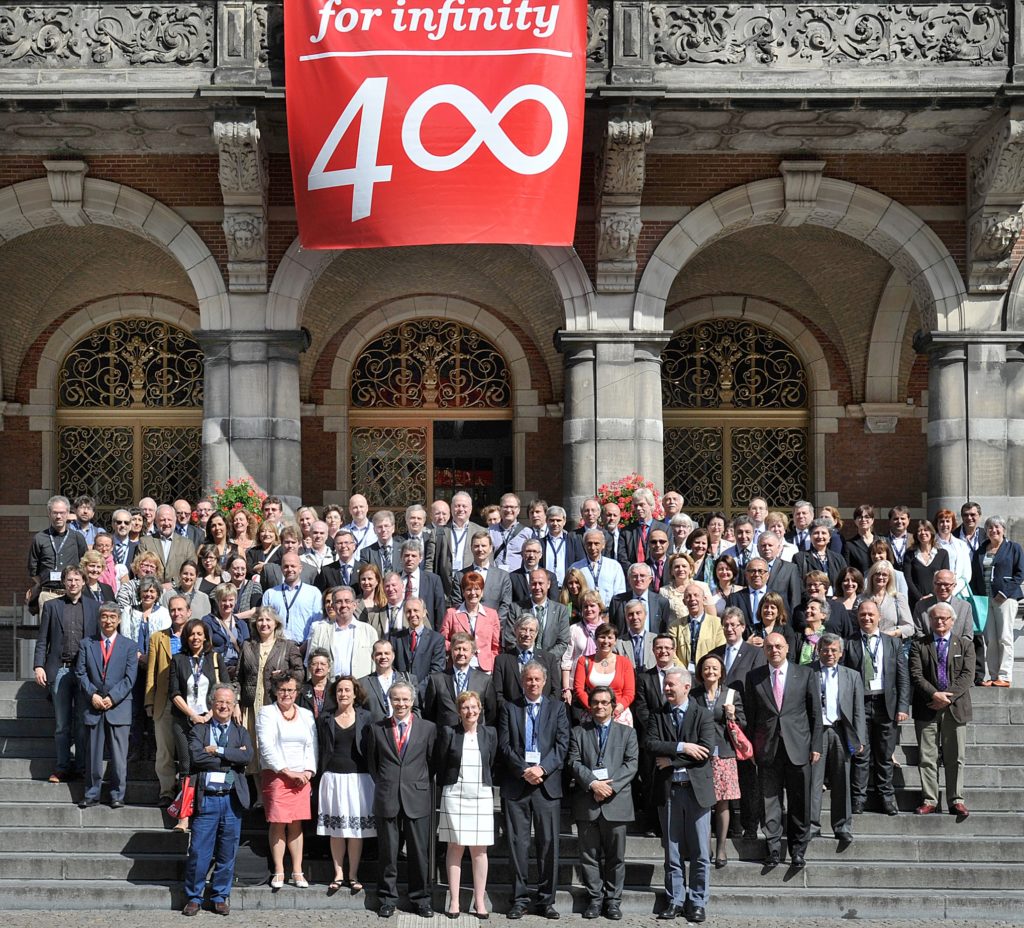
The theme of the 2014 Annual Conference, on the occasion of the 400th anniversary of the University of Groningen, was “Universities in the 21st Century: For Infinity”. The conference discussed how universities should respond to the challenges of the 21st century in order to thrive and survive, a theme followed in 2015 at the Istanbul Annual Conference on “Networking in Higher Education” as an essential part of university collaboration in research and education. Representatives of networks from universities in Latin America, Asia and the Middle East, gave presentation on collaboration activities and initiatives.
The policies and initiatives taken at these two last annual conferences have contributed to the further consolidation of the Group’s work, something which provides a firm basis for future cooperation amongst member universities, cooperation partners and policy makers.
Before the start of the academic year 2015-2016, the Coimbra Group Universities hosted around 1.358M students and 235,000 staff members.
Even before the start of the Erasmus Programme, CG Universities were preferred destinations for exchange students, something that has not changed over the past almost three decades of changing EU education programmes. In 2013-2014, close to 36,000 students either went to or came from one of the CG universities within the Erasmus student exchange programme, i.e. 16.3 per cent of the estimated total Erasmus student mobility, or one in six students. The CG was also very active in the Erasmus Mundus Actions 1 and 2 projects. In the 2014 selection, the CG is a partner in two Erasmus+ Strategic Partnership projects. Our member universities coordinate four such projects, and are partners in twenty-two.
CG Universities command impressive research budgets of several billions of Euros. Research funding is composed of direct financing, research projects, competitive funding, research foundations and sponsorship. In the academic year 2014-2015 EU research projects at CG Universities brought in about 100 M€ and European Research Council funding about half, at 483 M€, with eleven of the CG Universities among the top fifty host institutions.
Throughout 2021, the Coimbra Group has played an active role in advocating for a representation of stakeholders – particularly from the university sector – in the governance of the renewed European Research Area (ERA) launched by the European Commission in September 2020.
The network has participated in all the consultations on the definition of the ERA Policy Agenda for 2022-2024. Taking into consideration its internal capacity and the strategic priorities of the Executive Board, the Coimbra Group has committed to implement 8 ERA policy actions. Furthermore, the Group has decided to take a lead role on behalf of the university sector in the implementation of Action 4 “Strengthening Research Careers” (co-sponsored by Coimbra Group and Portugal) and Action 13 “Empowering Higher Education Institutions in advancing the ERA in synergy with the EEA” (sub-group of experts co-chaired by Coimbra Group and France).
TO BE CONTINUED…
List of Annual Conferences
List of Annual Conferences with General Assembly of Rectors or Rectors’ representatives
1985 Louvain-Leuven, 25-26 October
1986 Aarhus, 11 – 13 September
1987 Pavia, 22 – 24 September
1988 Galway-Dublin, 21 – 25 October
1989 Poitiers, 7 – 9 September
1990 Coimbra, 2 – 5 April
1991 Heidelberg, 18 – 22 June
1992 Oxford, 30 March – 3 April
1993 Budapest, 5 – 9 May
1994 Groningen, 15 – 17 June
1995 Leiden, 5 – 8 June
1996 Uppsala, 21 – 24 May
1997 Thessaloniki, 13 – 17 May
1998 Salamanca, 12 – 16 May
1999 Pavia, 1 – 5 June
2000 Graz, 7 – 9 June
2001 Bristol, 18 – 21 April
2002 Leuven, 17 – 20 April
2003 Granada, 23 – 26 April
2004 Siena, 14 – 16 April
2005 Coimbra, 1 – 3 June
2006 Tartu, 17 – 19 May
2007 Turku / Åbo, 30 May – 2 June
2008 Jena, 14 – 16 May
2009 Genève, 2 – 5 June
2010 Iaşi, 9-11 June
2011 Padova, 25-27 May
2012 Göttingen, 29-31 May
2013 Galway, 22-24 May
2014 Groningen, 10-13 June
2015 Istanbul, 2-5 June
2016 Poitiers, 7-10 June
2017 Edinburgh, 6-9 June
2018 Salamanca, 29 May-1 June
2019 Kraków, 4-7 June
2020 online, 12 June (only GA)
2021 online, organised by Charles University (Prague)
2022 Padova, 7-10 June
2023 Köln, 30 May – 2 June
2024 Åbo / Turku, 4-7 June
2025 Bologna, 10-13 June
